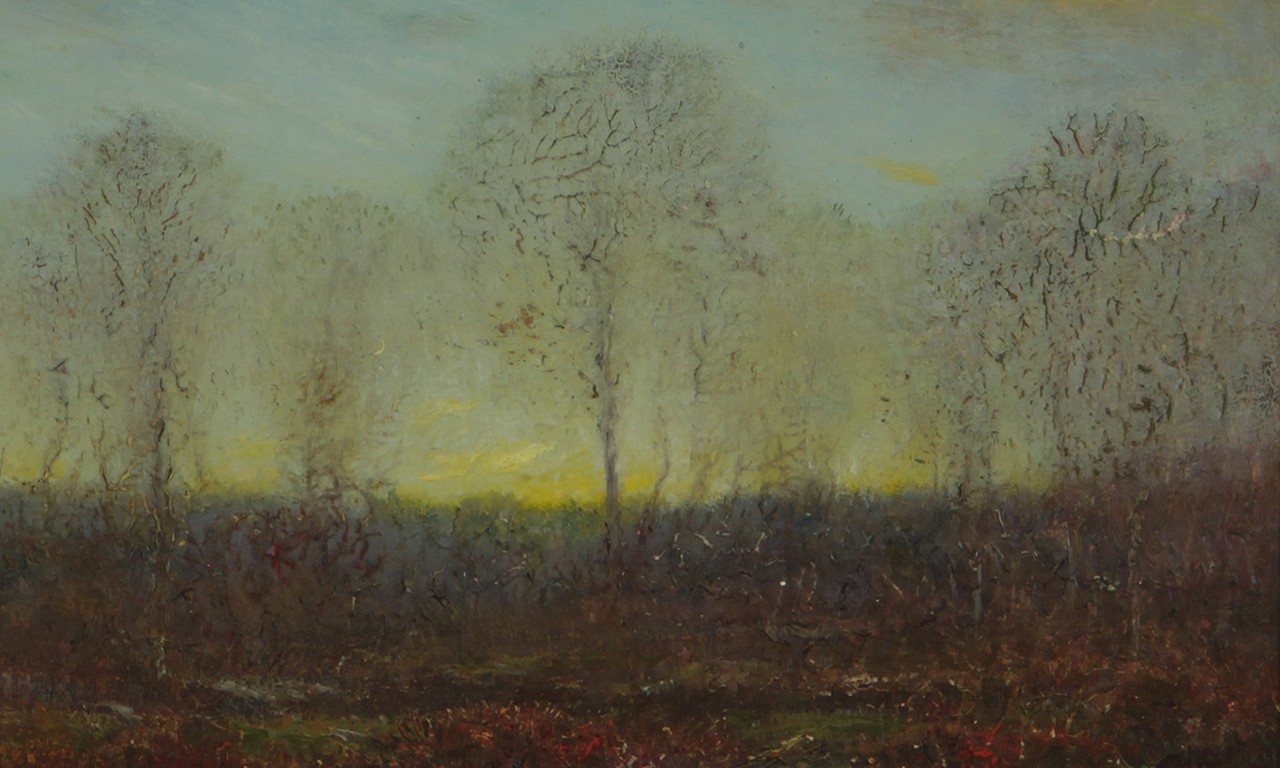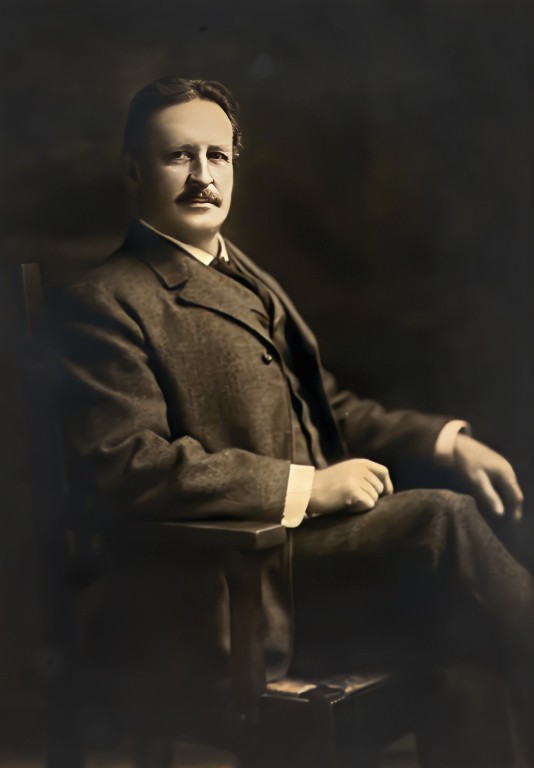2002 North Main Street
Santa Ana, California 92706
TEL: 714.567.3600
Impressions of Fall: Dwight W. Tryon
 |
| Autumn Evening, 1921 Dwight W. Tryon (1849-1925) Oil on canvas; 11 x 16 in. F7692 Martha C. Stevens Memorial Collection |
Trees Beyond Trees
Though the weather seems to be fluctuating between mildly warm and quite warm rather than downshifting into the crispness that is generally characteristic of the autumn season, we are now a good way into fall. Continuing in our series on American impressionists who sought to capture this most pumpkin-spiced quarter, today’s post looks at the artwork of Dwight W. Tryon who—quite similarly to John Francis Murphy, the first featured artist of this series—earned his reputation through the repetition of one iconic composition: landscapes with clearings and a neat row of trees.
 |
| Portrait of Tryon seated in a chair by Marceau Marc, 1918 Collections of the American Archives of Art |
Teenage Hartford
Dwight William Tryon was born in Hartford, Connecticut, in 1849, to Anson Tryon and Delia O. Roberts. Very early in his life, he lost his father to a gun accident and ended up being raised on a farm by his mother and grandparents. Ironically, his first job was working at a firearms factory at the age of fourteen. He gravitated to art naturally, sketching in his free time, pouring over art manuals while on breaks at his subsequent job as a bookstore clerk, and taking frequent trips to the Connecticut River to paint. He had no formal education when he began his career, but all the same his artworks began to sell. In 1876, he struck a deal to auction off all of his as-of-yet unsold works for $2,000 and used the money to travel to Paris with his wife, Alice Hepzibah (Belden) Tryon.
 |
| Dwight W. Tryon, Midsummer Moonrise, 1892, oil on wood, 19 1/8 x 25 5/8 in. (48.7 x 65.1 cm), Smithsonian American Art Museum, Gift of International Business Machines Corporation, 1969.131 |
Five Years in France
In Paris, his painterly education became more structured, but his wider travels throughout Europe were equally influential. He took courses at the Ecole des Beaux Arts and studied at the atelier of Jacqueson de la Chevreuse. The Tryons ventures outside of the City of Light took them as far as Holland and Italy, but perhaps the part of the trip that most informed the artist’s career was a summer spent in the village of Barbizon, the namesake of a style Tryon came to adopt. In France he would go on to train with Charles-Francois Daubigny, Henri-Joseph Harpignes, and J.B. Antoine Guillemet, the latter two of whom became a big source of inspiration for his pastoral scenes.
 |
| Moonrise by Dwight William Tryon, 1910, oil on panel; photograph by Christie’s |
Settling In
Tryon returned to the United States in 1881 and was greeted with a series of successes. In 1885 he was hired to teach at Smith College, eventually becoming the director of the art school in 1903. Not long after the establishment of his New York teaching studio, he had a chance encounter with the industrialist Charles Lang who became a life-long patron. More well-known art collectors followed suit, effectively putting any financial concerns that Tryon might have faced to rest. Perhaps as a result of the relative ease of his life, in the 1890s Tryon’s work began to follow a formula that was summarized thusly by Carole Lowrey: "a patch of meadowland, bounded by groupings of tall, graceful trees with wispy foliage in the middle ground, bathed in the soft, ethereal luminosity of early spring or fall." As it happens, Lowrey’s characterization perfectly describes the Bowers’ Tryon painting, Autumn Evening. An avid adherent to the philosophy of “if it ain’t broke, don’t fix it,” Dwight D. Tryon's dedication to painting open fields and tree lines is a testament to consistency.
 |
| Detail of F7692 Martha C. Stevens Memorial Collection |
Vibrancy in the Half-Light
Within the remarkable uniformity of his compositions, however, is a great deal of variety in color and in medium. Towards the end of his life, he began to work more often in pastels, stating that they allowed him more creative control. Even in the Bowers’ painting, an oil, he appears to have used a sponge to apply the translucent foliage. It is a technique that he did not employ much elsewhere and gives the work a somewhat alien effect that contrasts with the reassuring natural splendor of his sky at evening. Tryon's palette tends to be muted, dominated by colors common to tonalists. The exceptions to this are the rare splashes of vibrancy found in early morning sunrises or the last light of day.
Text and images may be under copyright. Please contact Collection Department for permission to use. References are available on request. Information subject to change upon further research.

Comments